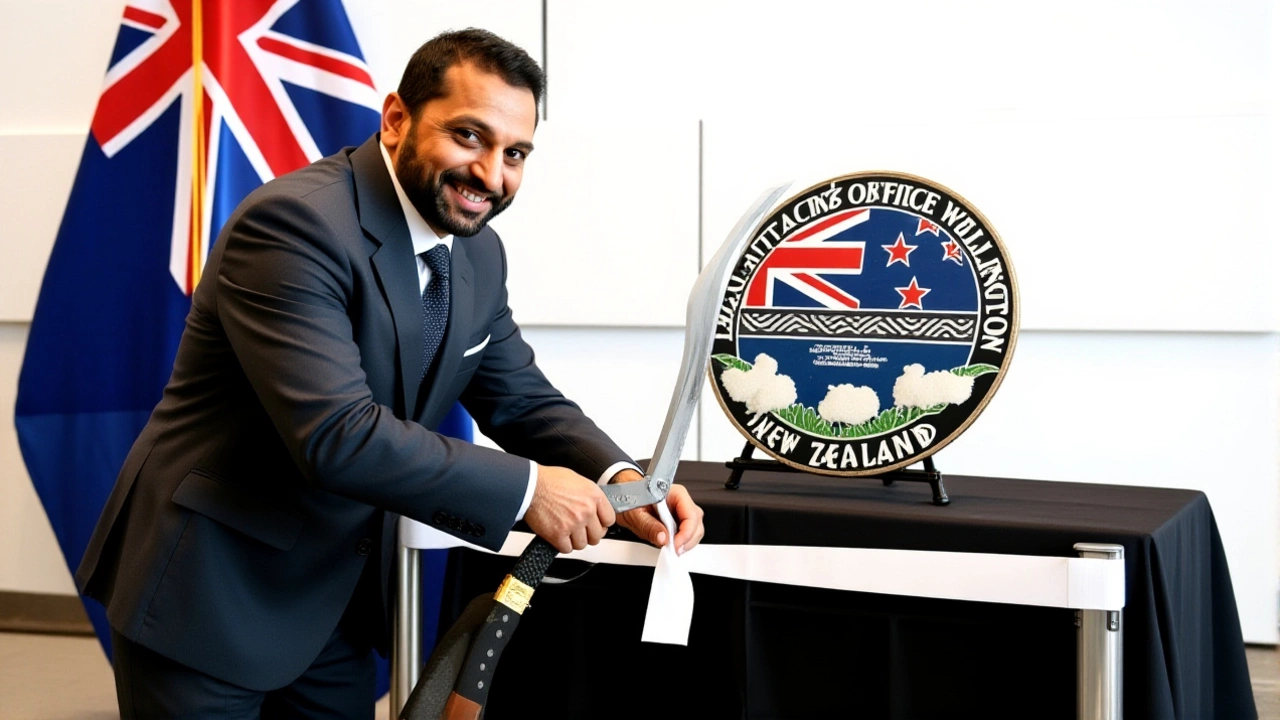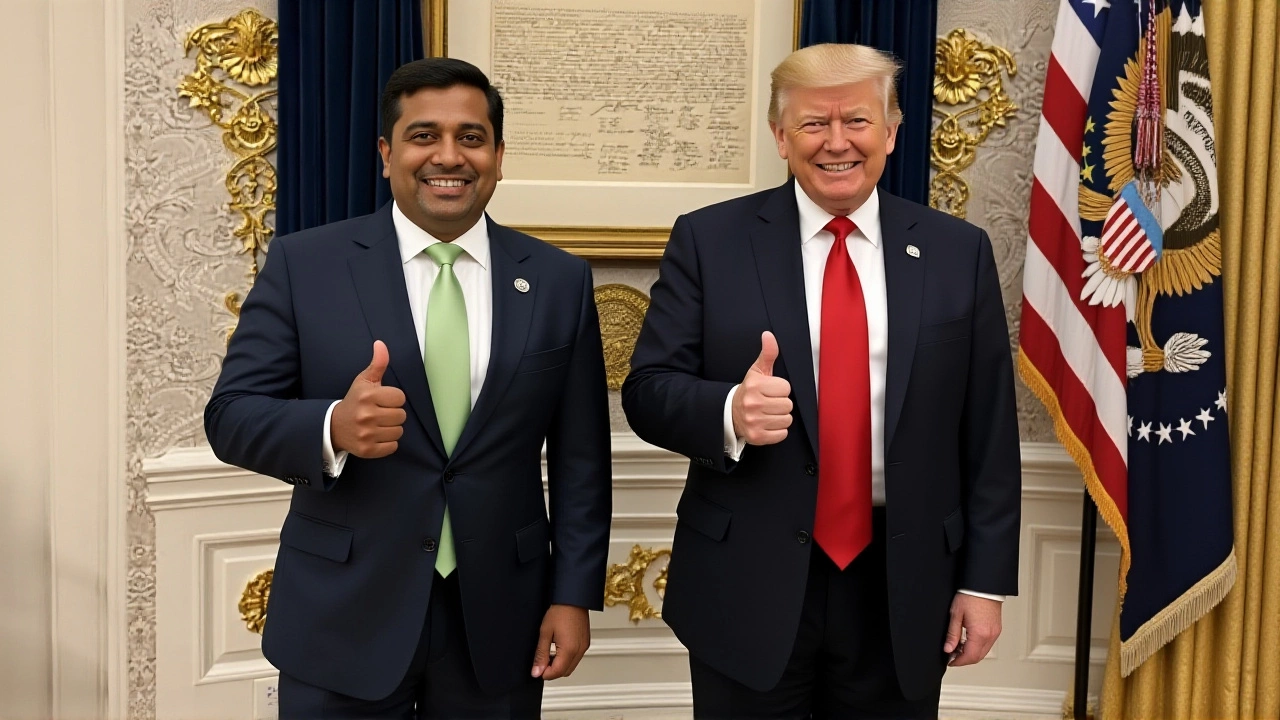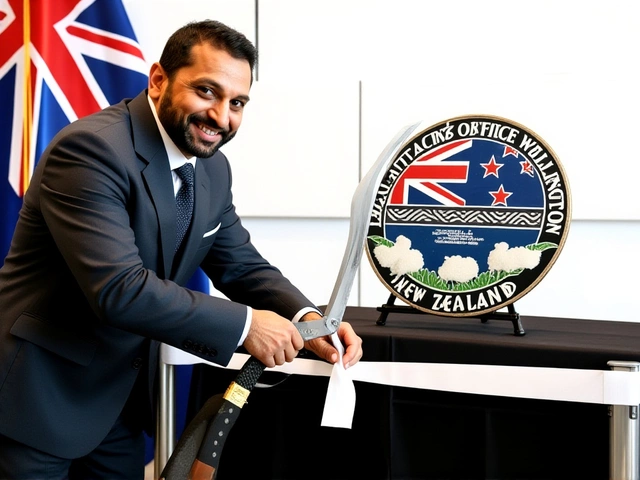FBI Director's 3D-Printed Gun Gifts to NZ Officials Violated Law, Led to Destruction

When Kash Patel, Director of the Federal Bureau of Investigation (FBI), handed out five plastic revolvers to New Zealand’s top security leaders in July 2025, he didn’t just break protocol—he broke the law. The gifts, modeled after the Maverick PG22, were meant as symbolic tokens during the opening of the FBI’s first standalone legal attaché office in Wellington. But under New Zealand’s post-Christchurch firearms regime, even a toy-looking plastic gun that can be turned deadly with a drill and a screw counts as a firearm. And in New Zealand, that’s not just illegal—it’s unthinkable.
What Happened in Wellington?
On July 12, 2025, Patel presented the 3D-printed revolvers to five officials: Police Commissioner Richard Chambers, Andrew Hampton of the New Zealand Security Intelligence Service (NZSIS), Andrew Clark of the Government Communications Security Bureau (GCSB), Police Minister Mark Mitchell, and Justice Minister Judith Collins. The pistols, made of polylactic acid (PLA) plastic, measured 18.5 centimeters long with 7.6-centimeter barrels. They had no firing pins. No triggers. No springs. Just plastic. Or so they claimed.The Law That Changed Everything
New Zealand’s approach to firearms hasn’t just been strict since 2019—it’s been surgical. After a white supremacist murdered 51 people at two mosques in Christchurch on March 15, 2019, Parliament passed the Arms (Prohibited Firearms, Magazines, and Parts) Amendment Act in just 26 days. The law didn’t just ban military-style semi-automatics. It also outlawed any component that could be assembled into a functional firearm—even if it wasn’t functional yet. The key phrase? “Capable of being readily converted.” That’s where the Maverick PG22 came in. According to internal police records obtained by the Associated Press, this model is among the most common 3D-printed guns seized by New Zealand officers. Police armory expert Daniel Millar sent an email on August 3, 2025, to Commissioner Chambers: “These processes are very straightforward and require minimal skills and common ‘handyperson’ tools.” He listed exactly what was needed: a battery drill, a drill bit, and a small screw for the firing pin. Thirty minutes. That’s it.
The Surrender and the Silence
Within days of Millar’s assessment, Chambers ordered all five revolvers surrendered. No warnings. No investigations into Patel. No public statements. Just quiet compliance. The weapons were destroyed on September 25, 2025, in a secure facility in Wellington. Millar had asked to keep one for forensic training. Chambers denied it. “We don’t keep illegal firearms,” an official told AP. “Not even for education.” When the Associated Press requested photos of the destroyed revolvers on October 15, 2025, New Zealand Police refused. Citing Section 9(2)(j) of the Official Information Act 1982, they claimed releasing the images “would be likely to prejudice New Zealand’s relations with the United States of America.” That’s not just bureaucratic legalese. It’s a diplomatic confession: the U.S. had broken the rules, and New Zealand chose silence over confrontation.Who Knew What—and When?
The story didn’t come from leaks. It came from an encrypted tip sent to New York-based investigative reporter Jim Mustian on July 30, 2025. Working with South Pacific correspondent Charlotte Graham-McLay, they tracked down on-record confirmations from three of the five recipients by August 5. Mitchell and Collins, both Cabinet ministers, confirmed receiving the gifts. But Patel’s office declined to comment. The FBI in Washington, D.C., insisted no prior consultation occurred with New Zealand authorities about importing firearms—even “inoperable” ones. That’s the real scandal. The FBI didn’t just ignore New Zealand’s laws. They didn’t even ask. In a country where even a 3D-printed gun part can land someone in prison, a senior U.S. official walked in with five unregistered weapons and handed them out like souvenirs.
What’s Next?
The National Security Oversight Group is scheduled to review diplomatic gift protocols by December 15, 2025. No disciplinary actions were taken against the New Zealand officials—they returned the items immediately. But the damage to trust is harder to repair. For years, New Zealand has been a quiet leader in global gun control. Now, it’s clear even allies don’t always respect its laws. The Maverick PG22 revolvers were plastic. But the message they sent? Very real. In New Zealand, a gun is a gun—even if it’s made of PLA. And if you don’t understand that, you don’t belong here.Frequently Asked Questions
Why were the 3D-printed guns illegal if they didn’t fire?
Under New Zealand’s Arms Act 1983, any object that can be readily modified into a functional firearm is legally classified as a firearm. The Maverick PG22 revolvers, though presented as non-functional, could be converted with basic tools like a drill and screw—something confirmed by police armory expert Daniel Millar. The law doesn’t care about intent; it cares about capability.
How does this compare to U.S. gun laws?
In the U.S., 3D-printed guns are largely legal under federal law if they contain metal components, though some states restrict them. New Zealand’s laws are far stricter: even plastic-only guns that can be converted are banned without explicit permits. The U.S. treats firearms as a constitutional right; New Zealand treats them as a public safety threat—especially after Christchurch.
Why didn’t the FBI consult New Zealand before bringing the guns?
The FBI claimed no prior consultation occurred, suggesting the gifts were treated as ceremonial items under U.S. diplomatic norms. But New Zealand’s laws don’t recognize diplomatic exceptions for firearms. This lack of coordination exposed a dangerous gap in how U.S. agencies operate abroad—especially in countries with radically different legal frameworks.
Could the officials have been charged?
Technically, yes. Possessing an unregistered firearm in New Zealand carries penalties up to three years in prison. But since the officials voluntarily surrendered the weapons before any formal investigation began, prosecutors declined to pursue charges. The focus shifted to preventing future incidents rather than punishing individuals.
What’s the significance of the destroyed revolvers not being photographed?
The refusal to release photos signals a high-level decision to protect diplomatic relations over transparency. It implies the U.S. government may have pressured New Zealand to avoid public scrutiny. For a country that prides itself on open government, this silence undermines public trust and suggests some laws are negotiable when powerful allies are involved.
Will this change how U.S. officials give gifts abroad?
The National Security Oversight Group’s December 2025 review will likely mandate mandatory legal briefings for U.S. officials before accepting or giving gifts in countries with strict firearms laws. This incident may become a mandatory case study in FBI diplomatic training—especially for attachés operating in Canada, Australia, and the UK, where similar laws exist.





